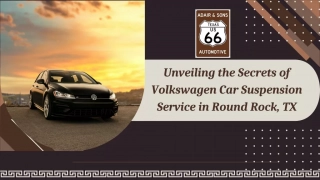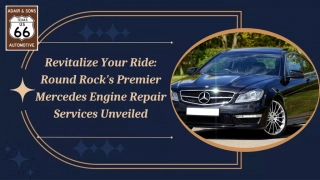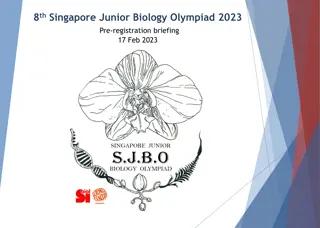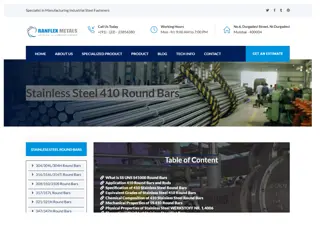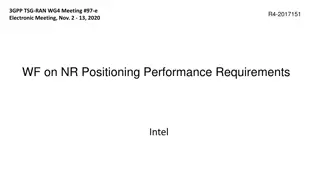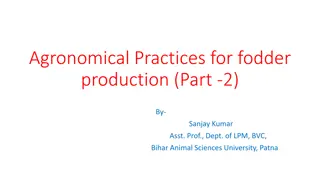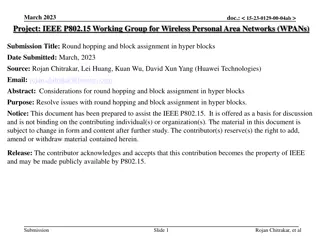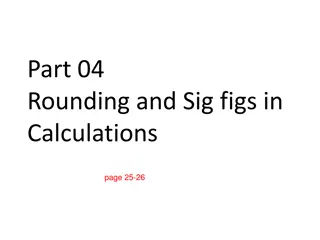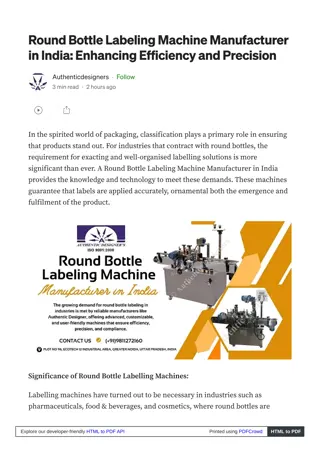
New Holland BR6080 Round Balers Service Repair Manual Instant Download
New Holland BR6080 Round Balers Service Repair Manual Instant Download
Download Presentation

Please find below an Image/Link to download the presentation.
The content on the website is provided AS IS for your information and personal use only. It may not be sold, licensed, or shared on other websites without obtaining consent from the author. If you encounter any issues during the download, it is possible that the publisher has removed the file from their server.
You are allowed to download the files provided on this website for personal or commercial use, subject to the condition that they are used lawfully. All files are the property of their respective owners.
The content on the website is provided AS IS for your information and personal use only. It may not be sold, licensed, or shared on other websites without obtaining consent from the author.
E N D
Presentation Transcript
?????????????? ??????????????? ???????????? ? ???????????????????
SERVICE MANUAL BR6080 BR6090 87711071B 14/09/2010
Contents INTRODUCTION HYDRAULIC-PNEUMATIC-ELECTRICAL-ELECTRONICSYSTEMSA SECONDARY HYDRAULIC POWER SYSTEM........................................... A.12.A ELECTRICAL POWER SYSTEM ......................................................... A.30.A ELECTRONIC SYSTEM .................................................................. A.50.A FAULT CODES ............................................................................ A.50.A LUBRICATION SYSTEM Oiling ...........................................................A.60.C ENGINE AND PTO IN....................................................................B PTO POWER IN........................................................................... B.90.A TRANSMISSION, DRIVE AND PTO OUT.........................................C PROCESS DRIVE Primary process drive.................................................C.50.B AXLES, BRAKES AND STEERING..................................................D PARKING BRAKE Mechanical ............................................................D.32.B WHEELS AND TRACKS Wheels......................................................... D.50.C CROP PROCESSING....................................................................K PICKING Picking up....................................................................... K.20.B FEEDING Round baler feeding............................................................K.25.H FEEDING Rotor feeding...................................................................K.25.N CHOPPING Crop cutter ................................................................... K.30.E PRESSING Round chain pressing ........................................................K.50.D WRAPPING AND TYING Net/Film wrapping.............................................. K.55.F WRAPPING AND TYING Twine tying ..................................................... K.55.B WRAPPING AND TYING Twine wrapping ................................................K.55.C WRAPPING AND TYING Twine wrapping (duckbill) ......................................K.55.D EJECTING Round bale.................................................................... K.70.B UNLOADING Bale unloading..............................................................K.72.D 87711071B 14/09/2010
https://www.ebooklibonline.com Hello dear friend! Thank you very much for reading. Enter the link into your browser. The full manual is available for immediate download. https://www.ebooklibonline.com
INTRODUCTION 87711071B 14/09/2010 1
INTRODUCTION Foreword How to use this manual The information in this manual has been structured using the Integrated Coding Environment (ICE). Ice is the new way in which technical information is created, stored and retrieved in the new Technical Information Database. ICE coding classifies each repair operation three ways 1. Location: the function or component on the machine to which the information is related e.g. Hydraulic pump 2. Information type: the type of information describing the repair operation e.g. Remove 3. Product: The machine that the repair operation is created for e.g. Big Balers Section contents Your manual is first divided in sections. Sections are classified according to the main functions of the product. Each Section has a Contents page listed in numerical order and Index page listed in Alphabetical order. Big Baler Section Contents DISTRIBUTION SYSTEMS (A) that interact with most of the functions of the product. it contains the central parts of the hydraulic, electrical, electronic, pneumatic and lubrication systems. POWER PRODUCTION (B) all of the functions related to the production of power to operate the vehicle PTO drive line and related parts. POWER TRAIN (C) all of the functions related to the transfer of power to operate the vehicle though a gearbox. TRAVELLING (D) this encompasses all parts related to the parts when the vehicle moves across ground, wheels, axles and brakes. BODY AND STRUCTURE (E) and protective shields CROP PROCESSING (K) encompasses all parts related to crop handling from pick up to bale ejecting. Chapter contents The Section is then divided in Chapters. Chapters are classified according to the specific function of the systems and components. Each Chapter has a contents page listed in numerical order and index page listed in alphabetical order. An example of a Chapter and Contents, is the component e.g. LUBRICATION SYSTEM Greasing, where the system is sub divided and described through 1. TECHNICAL DATA, information describing specifications or characteristics of any function or system of the ma- chine. 2. FUNCTIONAL DATA, information describing design and functional behavior of any function or system (How it works) 3. SERVICE, information describing the maintenance and repair of the machine. 4. DIAGNOSTIC, information related to systems, troubleshooting and errors. An example of the ICE Coding reference could look like: Pump - Install (A.60.C). A = SECTION 60 = CHAPTER C.20 = COMPONENT F = SERVICE 87711071B 14/09/2010 3
INTRODUCTION 15 = BASIC Page reference Printed references found at the base of each page then equate to Publication number Revision date of the publication Publication date Chapter reference Page reference 87711071B 14/09/2010 4
INTRODUCTION Safety rules IMPORTANT INFORMATION All repair and maintenance works listed in this manual must be carried out only by staff belonging to the Manu- facturers Service network, strictly complying with the instructions given and using, whenever required, the special tools. Anyone who carries out the above operations without complying with the prescriptions shall be responsible for the subsequent damages. The manufacturer and all the organizations of its distribution chain, including - without limitation - national, regional or local dealers, reject any responsibility for damages due to the anomalous behaviour of parts and/or components not approved by the manufacturer himself, including those used for the servicing or repair of the product manu- factures or marketed by the Manufacturer. In any case, no warranty is given or attributed on the product manufactures of marketed by the Manufacturer in case of damages due to an anomalous behaviour of parts and/or components not approved by the Manufacturer. No reproduction, though partial of text and illustrations allowed SAFETY INFORMATION WARNING AND DANGER SYMBOLS Warning symbols point out important personal safety messages. Carefully read the following safety regulations and observe advised precautions in order to avoid potential hazards and safeguard your health and safety. In this manual the symbol is accompanied by the following key words: DANGER", CAUTION", WARNING". Warnings concerning unsuitable repair operations that may jeopardize the safety of Repair personnel. DANGER - Specific warnings concerning potential hazards for operator safety or for other persons directly or indirectly involved. ACCIDENT PREVENTION Most accidents or injuries that occur in workshops are the result of non observance of simple and fundamental safety regulations. For this reason, IN MOST CASES THESE ACCIDENTS CAN BE AVOIDED by foreseeing possible causes and consequently acting with the necessary caution and care. Accidents may occur with all types of machine, regard- less of how well the machine in question was designed and built. A careful and judicious service technician is the best guarantee against accidents. Precise observance of the most basic safety rule is normally sufficient to avoid many serious accident. DANGER Never carry out any cleaning, lubrication or maintenance operations when the tractor engine is running. SAFETY RULES AND REGULATIONS Carefully follow specified repair and maintenance procedures. Do not wear rings, wrist watches, jewelry, unbuttoned or loose articles of clothing such as: ties, torn clothing, scarves, open jackets or shirts with open zips that may remain entangled in moving parts. It is advised to wear approved safety clothing, e.g.: non slip footwear, gloves, safety goggles, helmets, etc. Do not carry out repair operations with someone sitting in the driver s seat, unless the person is a trained technician who is assisting with the operation in question. Do not operate the machine or use any of the implements from different positions, other than the driver s seat. Do not carry out operations on the machine with the tractor engine running, unless specifically indicated. Stop the tractor engine and check that the hydraulic circuits are pressure-free before removing caps, covers, valves, etc. All repair and maintenance operations must be carried out using extreme care and attention. Service steps and platforms used in the workshop or elsewhere should be built according to standard accident prevention regulations. Disconnect the p.t.o. from the tractor and label all controls to indicate that the machine is being serviced. Any parts that are to be raises must be locked in position. 87711071B 14/09/2010 5
INTRODUCTION Brakes are inoperative when manually released for repair or maintenance purposes. Use blocks or similar devices to control the machine in these conditions. Only use specified towing points for towing the machine. Connect parts carefully. Make sure that all pins and/or locks are secured in position before applying traction. Never remain near the towing bars, cables or chains that are operating under load. When loading or unloading the machine from the trailer (or other means of transport), select a flat area capable of sustaining the trailer or truck wheels. Firmly secure the machine to the truck or trailer and lock the wheels in the position used by the carrier. Electric heaters, battery-chargers and similar equipment must only be powered by auxiliary power supplies with efficient ground insulation to avoid electrical shock hazards. Always use suitable hoisting or lifting devices when raising or moving heavy parts. Take extra care if bystanders are present. Never use petrol, diesel oil or other inflammable liquids as cleaning agents. Use non inflammable, non toxic com- mercially available solvents. Wear safety goggles with side guards when cleaning parts with compressed air. Reduce the air pressure according to the local regulations in force. Do not run the tractor engine in confined spaces without suitable ventilation. Never use naked flames for lighting when working on the machine or checking for leaks. All movements must be carried out carefully when working under, on or near the machine. Wear protective equip- ment: helmets, goggles and special footwear. When carrying out checks with the tractor engine running, request the assistance of an operator in the driver s seat. The operator must maintain visual contact with the service technician at all times. If operating outside the workshop, position the machine on a flat surface and lock in position. If working on a slope, lock the machine in position. Move to a flat area as soon as is safely possibl Damaged or bent chains or cables are unreliable. Do not use them for lifting or towing. Always use suitable protective gloves when handling chains or cables. Chains should always be safely secured. Make sure that the hitch-up point is capable of sustaining the load in question. Keep the area near the hitch-up point, chains or cables free of all bystanders. Maintenance and repair operations must be carried out in a CLEAN and DRY area. Eliminate any water or oil spillage immediately. Do not create piles of oil or grease-soaked rags as they represent a serious fire hazard. Always store rags in a closed metal container. Before engaging the machine, make sure that there are no persons within the machine or implement range of action. Empty your pockets of all objects that may fall accidentally unobserved into the machine inner compartments. In the presence of protruding metal parts, use protective goggles or goggles with side guards, helmets, special footwear and gloves. When welding, use protective safety devices: tinted safety goggles, helmets, special overalls, gloves and footwear. All persons present in the area where welding is taking place must wear tinted goggles. NEVER LOOK DIRECTLY AT THE WELDING ARC WITHOUT SUITABLE EYE PROTECTION. Metal cables tend to fray with repeated use. Always use suitable protective devices (gloves, goggles, etc.) when handling cables. Handle all parts carefully. Do not put your hands or fingers between moving parts. Wear suitable safety clothing - safety goggles, gloves and shoes. START UP Never run the tractor engine in confined spaces that are not equipped with adequate ventilation for exhaust gas extraction. Never place the head, body, limbs, feet, hands or fingers near rotating and moving parts. HYDRAULIC SYSTEMS A liquid leaking from a tiny hole may be almost invisible but, at the same time, be powerful enough to penetrate the skin. 87711071B 14/09/2010 6
INTRODUCTION Therefore,NEVER USE HANDS TO CHECK FOR LEAKS but use a piece of cardboard or wood for this purpose. If any liquid penetrates skin tissue, call for medical aid immediately. Failure to treat this condition with correct medical procedure may result in serious infection or dermatosis. In order to check the pressure in the system use suitable instruments. WHEELS AND TYRES Make sure that the tyres are correctly inflated at the pressure specified by the manufacturer. Periodically check the rims and tyres for damage. Stand away from (at the side of) the tyre when checking inflation pressure. Do not use parts of recovered wheels as incorrect welding brazing or heating may weaken and eventually cause damage to the wheel. Never cut or weld a rim mounted with an inflated tyre. To remove the wheels, lock all wheels. After having raised the machine, position supports underneath, according to regulations in force. Deflate the tyre before removing any objects that may be jammed in the tyre tread. Never inflate tyres using inflammable gases, as this may result in explosions and injury to bystanders. REMOVAL AND REFITTING Lift and handle all heavy parts using suitable hoisting equipment. Make sure that parts are sustained by appropri- ate hooks and slings. Use the hoisting eyebolts for lifting operations. Extra care should be taken if persons are present near the load to be lifted. Handle all parts carefully. Do not put your hands or fingers between parts. Wear suitable safety clothing - safety goggles, gloves and shoes. Avoid twisting chains or metal cables. Always wear safety gloves when handling cables or chains. HAULING THE BALER When hauling the baler, always make sure that all loose components are securely fastened to the machine: P.t.o. front half Spare net roll basket Hydraulic hoses Bale command monitor and road light wire harnesses Twine balls Net rolls Pick-up wheels Operator monitor, tractor wire harness and battery cable Operator s manual Close all guards and lock the pick-up in the transport position. 87711071B 14/09/2010 7
INTRODUCTION Lifting and craning points: If attempting to lift the baler it will be necessary to attach the lifting chains at three points and they are from the tow hitch and either side of the baler frame using the lift points as identified by the lift decals. 87711071B 14/09/2010 8
INTRODUCTION Torque Minimum hardware tightening torques Nm lb ft lb in for normal assembly applications un- less otherwise stated NOTICE: Shown below is the suggested initial torque tightening sequences for general applications, tighten in se- quence from item 1 through to the last item of the hardware. 1 df5019-1 Imperial hardware Nominal Size SAE SAE GRADE 2 plated w/ZnCr GOLD 8.1 Nm 72 lb in 17 Nm 149 lb in 30 Nm 22 lb ft 47 Nm 35 lb ft 73 Nm 54 lb ft 104 Nm 77 lb ft 145 Nm 107 lb ft 256 Nm 189 lb ft 248 Nm 183 lb ft 373 Nm 275 lb ft SAE SAE GRADE 5 plated w/ZnCr GOLD 13 Nm 112 lb in 26 Nm 229 lb in 46 Nm 34 lb ft 73 Nm 54 lb ft 113 Nm 83 lb ft 163 Nm 120 lb ft 224 Nm 165 lb ft 397 Nm 293 lb ft 641 Nm 473 lb ft 960 Nm 708 lb ft SAE GRADE 8Unplated or Silver plated 14 Nm 121 lb in 28 Nm 250 lb in 50 Nm 37 lb ft 80 Nm 59 lb ft 123 Nm 91 lb ft 176 Nm 130 lb ft 244 Nm 180 lb ft 432 Nm 319 lb ft 698 Nm 515 lb ft 1048 Nm 773 lb ft SAE GRADE 8 plated w/ZnCr GOLD 18 Nm 157 lb in 37 Nm 324 lb in 65 Nm 48 lb ft 104 Nm 77 lb ft 159 Nm 117 lb ft 229 Nm 169 lb ft 316 Nm 233 lb ft 560 Nm 413 lb ft 904 Nm 667 lb ft 1356 Nm 1000 lb ft LOCK- NUTS GR.B w/GR5 BOLT 6.9 Nm 61 lb in 14 Nm 125 lb in 26 Nm 19 lb ft 41 Nm 30 lb ft 61 Nm 45 lb ft 88 Nm 65 lb ft 122 Nm 90 lb ft 217 Nm 160 lb ft 350 Nm 258 lb ft 523 Nm 386 lb ft LOCK- NUTS GR.B w/GR8 BOLT 9.8 Nm 86 lb in 20 Nm 176 lb in 35 Nm 26 lb ft 57 Nm 42 lb ft 88 Nm 64 lb ft 125 Nm 92 lb ft 172 Nm 127 lb ft 305 Nm 226 lb ft 494 Nm 364 lb ft 739 Nm 545 lb ft GRADE 2 Unplated or Silver plated 6.2 Nm 55 lb in 13 Nm 115 lb in 23 Nm 17 lb ft 37 Nm 27 lb ft 27 Nm 42 lb ft 81 Nm 60 lb ft 112 Nm 83 lb ft 198 Nm 146 lb ft 193 Nm 142 lb ft 289 Nm 213 lb ft GRADE 5 Unplated or Silver plated 9.7 Nm 86 lb in 20 Nm 178 lb in 35 Nm 26 lb ft 57 Nm 42 lb ft 87 Nm 64 lb ft 125 Nm 92 lb ft 174 Nm 128 lb ft 306 Nm 226 lb ft 495 Nm 365 lb ft 742 Nm 547 lb ft 1/4 5/16 3/8 7/16 1/2 9/16 5/8 3/4 7/8 1.0 Metric hardware Nominal Size CLASS 5.8 UNPLATED CLASS 5.8 UNPLATED CLASS 8.8 UNPLATED CLASS 8.8 UNPLATED CLASS 10.9 UNPLATED CLASS 10.9 UNPLATED LOCKNUT CL.8 w/CL8.8 BOLT 1.8 Nm 16 lb in 6.3 Nm 56 lb in 15 Nm 133 lb in M4 1.7 Nm 15 lb in 5.8 Nm 51 lb in 14 Nm 124 lb in 2.2 Nm 19 lb in 7.6 Nm 67 lb in 18 Nm 159 lb in 2.6 Nm 23 lb in 8.9 Nm 79 lb in 22 Nm 195 lb in 3.4 Nm 30 lb in 12 Nm 102 lb in 28 Nm 248 lb in 3.7 Nm 33 lb in 13 Nm 115 lb in 31 Nm 274 lb in 4.8 Nm 42 lb in 17 Nm 150 lb in 40 Nm 354 lb in M6 M8 87711071B 14/09/2010 9
INTRODUCTION Nominal Size CLASS 5.8 UNPLATED CLASS 5.8 UNPLATED CLASS 8.8 UNPLATED CLASS 8.8 UNPLATED CLASS 10.9 UNPLATED CLASS 10.9 UNPLATED LOCKNUT CL.8 w/CL8.8 BOLT 30 Nm 22 lb ft 53 Nm 39 lb ft 131 Nm 97 lb ft 265 Nm 195 lb ft 458 Nm 338 lb ft M10 28 Nm 21 lb ft 49 Nm 36 lb ft 121 Nm 89 lb ft 237 Nm 175 lb ft 411 Nm 303 lb ft 36 Nm 27 lb ft 63 Nm 46 lb ft 158 Nm 117 lb ft 307 Nm 107 lb ft 531 Nm 392 lb ft 43 Nm 32 lb ft 75 Nm 55 lb ft 186 Nm 137 lb ft 375 Nm 277 lb ft 648 Nm 478 lb ft 56 Nm 41 lb ft 97 Nm 72 lb ft 240 Nm 177 lb ft 485 Nm 358 lb ft 839 Nm 619 lb ft 61 Nm 45 lb ft 107 Nm 79 lb ft 266 Nm 196 lb ft 519 Nm 383 lb ft 897 Nm 662 lb ft 79 Nm 58 lb ft 138 Nm 102 lb ft 344 Nm 254 lb ft 671 Nm 495 lb ft 1160 Nm 855 lb ft M12 M16 M20 M24 2 5057 87711071B 14/09/2010 10
INTRODUCTION 3 dave5019 87711071B 14/09/2010 11
INTRODUCTION Torque Hydraulic connectors NOTICE: The following data is for general use on lightly oiled threads on standard hydraulic connectors, where the counter parts are made of steel. BSP Hydraulic adapter connections Nominal size of nut BSP SIZE 1/8 1/4 3/8 1/2 5/8 3/4 1 1-1/4 1-1/2 2 Tightening Torque Nm (Lbsf/ft) 17 Nm (12.5 lb ft) 34 Nm (25.1 lb ft) 47 Nm (34.7 lb ft) 102 Nm (75.2 lb ft) 122 Nm (90.0 lb ft) 149 Nm (109.9 lb ft) 203 Nm (149.7 lb ft) 305 Nm (225.0 lb ft) 305 Nm (225.0 lb ft) 400 Nm (295.0 lb ft) O.R.F.S Hydraulic connections Nominal size of nut SAE Dash - -4 -6 -8 -10 -12 -16 -20 -24 Thread Tightening torque NM (lbsf/ft) Equivalent BSP size 9/16-18 11/16-16 13/16-16 1-14 1-3/16-12 1-7/16-12 1-11/16-12 2-12 - 1/8 1/4 3/8 1/2 5/8 3/4 1 1-1/4 1-1/2 14 Nm (10.3 lb ft) 24 Nm (17.7 lb ft) 33 Nm (24.3 lb ft) 44 Nm (32.5 lb ft) 58 Nm (42.8 lb ft) 84 Nm (62.0 lb ft) 115 Nm (84.8 lb ft) 189 Nm (139.4 lb ft) 244 Nm (180.0 lb ft) Metric connections Nominal size of nut Metric nut M10 M12 M14 M16 M18 M20 M22 M26 M33 M42 M48 Tightening Torque Nm (Lbsf/ft) 18 Nm (13 lb ft). 20 Nm (15 lb ft). 25 Nm (19 lb ft). 45 Nm (33 lb ft). 50 Nm (37 lb ft). 70 Nm (52 lb ft). 75 Nm (55 lb ft). 110 Nm (81 lb ft). 220 Nm (162 lb ft). 230 Nm (170 lb ft). 250 Nm (258 lb ft). 87711071B 14/09/2010 12
INTRODUCTION Metric Tightening torque NM (lbsf/ft) Nominal size of nut 5/16-24 3/8-24 7/16-20 1/2-20 9/16-18 5/8-18 3/4-16 7/8-14 1-1/16-12 1-3/16-12 1-5/16-12 1-5/8-12 1-7/8-12 2-1/2-12 10 Nm (7 lb ft). 10 Nm (7 lb ft). 14 Nm (10 lb ft). 20 Nm (15 lb ft). 22 Nm (20 lb ft). 27 Nm (20 lb ft). 48 Nm (35 lb ft). 81 Nm (60 lb ft). 108 Nm (79 lb ft). 136 Nm (100 lb ft). 148 Nm (108 lb ft). 173 Nm (127 lb ft). 216 Nm (158 lb ft). 334 Nm (245 lb ft). NOTICE: This data is for general use on lightly oiled threads on standard hydraulic connectors, where the counter parts are made of steel. 87711071B 14/09/2010 13
Suggest: If the above button click is invalid. Please download this document first, and then click the above link to download the complete manual. Thank you so much for reading
INTRODUCTION General specification GENERAL INFORMATION This Repair Manual provides the technical information needed to properly service the round balers. Use this man- ual in conjunction with the Operator s Manual for complete operation, adjustment and maintenance information. On this equipment, left and right are determined by standing behind the unit, looking in the direction of travel. The descriptions and specifications contained in this manual were in effect at the time the manual was released for printing. The company reserves the right to discontinue models at any time, or to change specifications and design without notice and without incurring obligation. NOTE: Some illustrations in this manual were made of prototype or previous production models. Current produc- tion models may vary in some detail. SHIMMING For each adjustment operation, select adjusting shims and measure individually using a micrometer, then add up the recorder values. Do not rely on measuring the entire shimming set, which may be incorrect, or the rated value indicated for each on shim. ROTATING SHAFT SEALS For correct rotating shaft seal installation, proceed as follows: before assembly, allow the seal to soak in the oil it will be sealing for at least thirty minutes thoroughly clean the shaft and check that the working surface on the shaft is not damaged position the sealing lip facing the fluid; with hydrodynamic lips, take into consideration the shaft rotation direction and position the grooves so that they will deviate the fluid towards the inner side of the seal coat the sealing lip with a thin layer of lubricant (use oil rather than grease) and fill the gap between the sealing lip and the dust lip on double lip seals with grease insert the seal in its seat and press down using a flat punch, do not tap the seal with a hammer or mallet whilst inserting the seal, check that the it is perpendicular to the seat; once settled, make sure that it makes contact with the thrust element, if required to prevent damaging the seal lip on the shaft, position a protective guard during installation operations O-RING SEALS Lubricate the O-RING seals before inserting them in the seats, this will prevent them from overturning and twisting, which would jeopardise sealing efficiency. SEALING COMPOUNDS ApplyoneofthefollowingsealingcompoundsonthematingsurfacesmarkedwithanX:RTVSILMATE,RHODOR- SIL CAF 1 or LOCTITE PLASTIC GASKET. Before applying the sealing compound, prepare the surfaces as follows: remove any incrustations using a metal brush; thoroughly de-grease the surfaces using one of the following cleaning agents: trichlorethylene, petrol or a water and soda solution. COTTER PINS When fitting split cotter pins, ensure that the pin notch is positioned in the direction of the force required to stress the pin. Spiral cotter pins do not require special positioning. SPARE PARTS Only use original spare parts bearing the COMPANY logo. Only genuine spare parts guarantee the same quality, duration and safety as original parts, as they are the same parts that are assembled during standard production. Only genuine spare parts can offer this guarantee. When ordering spare parts, always provide the following information: Machine model (commercial name) and serial number Part number of the ordered part, which can be found in the Spare Parts Catalogue, used for order processing TOOLS 87711071B 14/09/2010 14
https://www.ebooklibonline.com Hello dear friend! Thank you very much for reading. Enter the link into your browser. The full manual is available for immediate download. https://www.ebooklibonline.com

